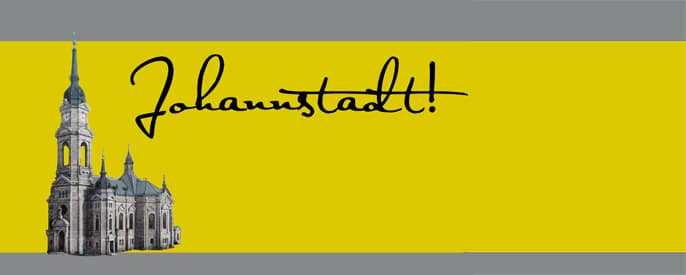This site is available in multiple languages: Deutsch, Русский, عربي.
Our historical walking tour begins at Trinitatisplatz, in the middle of Johannstadt. You can reach Trinitatisplatz with tram line 6, from the direction of Postplatz or Niedersedlitz.
Before 1945: In the center of Johannstadt
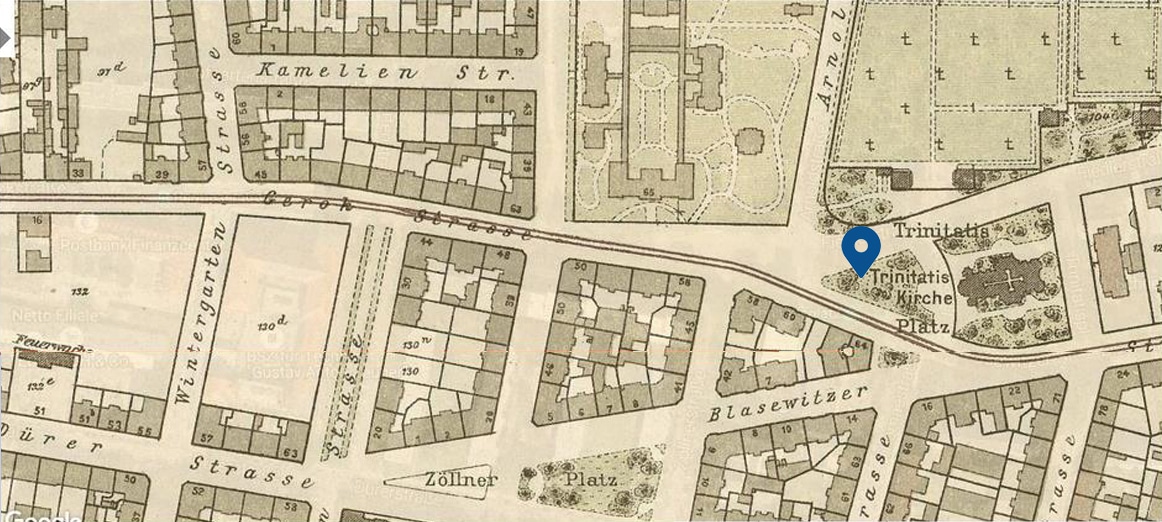
Trinitatisfriedhof
Due to the closure of the old Johannisfriedhof in the year 1814, a new burial site needed to be found beyond the city limits. The choice was made to use the land that had once belonged to the now recently destroyed Engelhardts Inn and Spittelholz. The city tasked court architect, Gottlob Friedrich Thormeyer, with planning the cemetery. In 1816, the grounds were ready for use, and after an expansion in 1834, they were christened, Trinitatisfriedhof. In the years that followed, many well-known people were buried here, including the doctor Carl Gustav Carus, the painter Caspar David Friedrich, the sculptor Ernst Rietschel and the singer Wilhelmine Schröder-Devrient. More information on the subject can be found at the cemetery. Next to Trinitatisfriedhof is the Neue Israelitische Friedhof (New Israelite Cemetery), which is also accessible for visits.
Find more information on the history of Trinitatisfriedhof here.
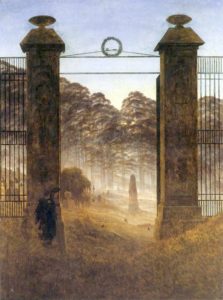
Trinitatiskirche
[lat. trinitatis] within the Christian church stands for the Trinity of the Father, the Son of God (Jesus) and the Holy Spirit.
Thanks to advancing industrialization, revised building codes and war reparations from the Franco-Prussian War of 1870/71, Dresden experienced a marked increase in building activity. This also included what had been up to that point the wholly rural area which would later become Johannstadt. Fields and gardens disappeared to make way for large, angular plots, with residential developments and small businesses in their courtyards. Factories moved in.
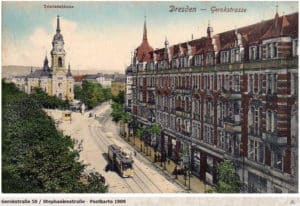
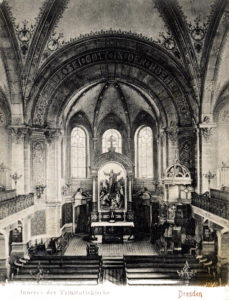
The area’s new inhabitants belonged to the Johannesgemeinde, founded in 1878. The congregation’s original home was the Johanneskirche at modern-day St. Benno Gymnasium. At the time of the church’s consecration, the faithful numbered 23,000. Six years later, the congregation had swelled to 40,000 – a number too large for the church. It was resolved that Johannstadt be assigned its own parish and that a new church be built in a central urban location. For this purpose, the 1888 city council gave the newly founded Trinitatisgemeinde a parcel of land at Trinitatisfriedhof. After much preliminary planning, a stipend was awarded to resident architect Karl Barth for the planning of a church on these grounds. In 1894, after three years of construction, the neo-Rennaissance style church, with its landmark 65-meter-tall tower, was festively inaugurated.
Find more information on the history of Trinitatiskirche here.
Trinitatisstraße
A series of interesting buildings and installations could be found all along Trinitatisstraße (now Fiedlerstraße). Trinitatisstraße 2 was home to the school of applied art’s sculpture studio, where many artists, including Dresden sculpter Selmar Werner (telamons of the Ständehaus, Schiller monument at Albertplatz, crucifixion scene at the former English Church, etc) were active. In addition, Dresden’s cigarette industry had set up two large factories on the street. The Kios cigarette factory and the Josetti cigarette factory established a reputation nationwide. Lippold’s suitcase company manufactured its goods on Trinitatisstraße. This small factory became best known for being mentioned in Erich Kästner’s 1957 novel, “Als ich ein kleiner Junge war”– Kästner’s father was an employee at Lippold’s. The literal cornerstone for the VE Backwarenkombinat, founded after 1945, once belonged to the local bread factory. Most of these factories and more were destroyed in the 1945 bombardment. All that is left today is one factory owner’s villa at Blasewitzer Straße 9.
More information on the history of Trinatisstraße here.
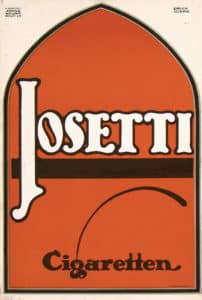
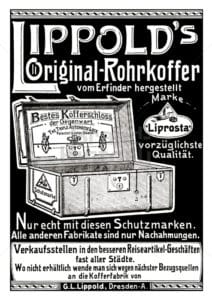
Promotional signs for Josetti and Lippold’s Kofferfabrik. Sources: unknown, from the JohannStadtArchiv collection
After 1945: From the ruins to the Jugendkirche
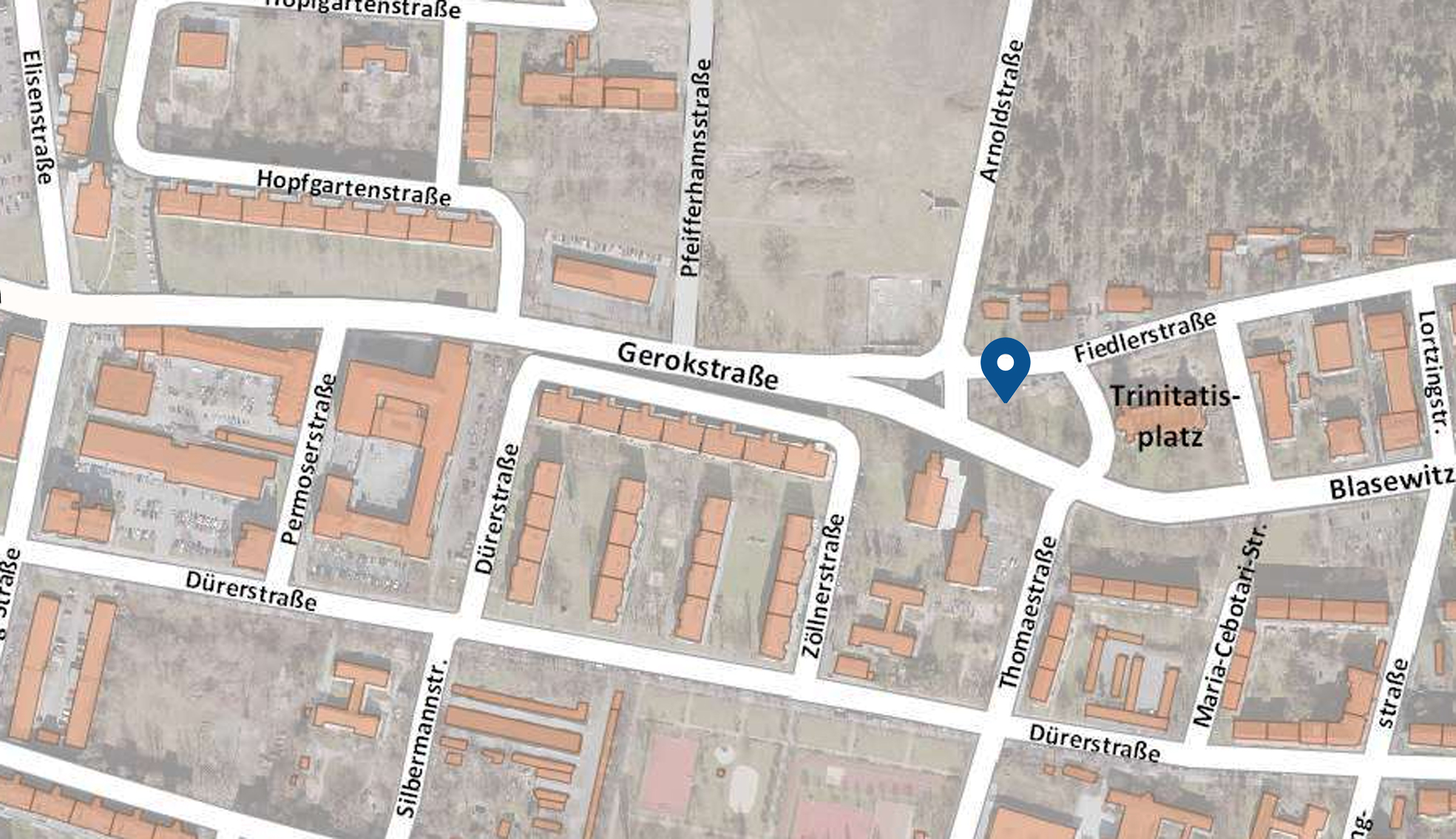
Ruins of Trinitatiskirche
The nave of Trinitatiskirche was burned out completely in the bombardment of February 1945, after just 51 years of use. The surrounding walls took serious damage, and the opposite parish hall, truss and interior furnishings were all lost. Only the tower survived the bombing relatively unscathed. With the start of extensive rubble-clearing operations in Johanstadt in the mid-1950s, the once densely developed–but now decimated–area around the church was cleared. A kindergarten moved into the reconstructed parish hall.
At the end of the 1960s, in an attempt to stop the ruins from being demolished, congregants developed a project for a worship room and a conference area. In their free time, they cleared rubble with the most simple means and secured the tower and the remains of the walls. Due to a lack of demolition funds and the new work on the church, the ruins stayed. Until 2019, prayer services, concerts and cultural events took place regularily under the open sky. Since 1992, the rooms in the tower have mainly been used by the Jugendtreff Trini for open youth work with support from the Landeshauptstadt Dresden. From 1996 to 2022, a friends’ association has been involved in the step-by-step development of the ruins.
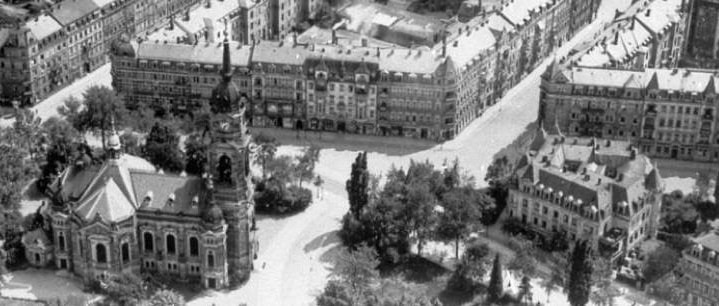
Bird’s eye view of Trinitatiskirche and surrounding development ca. 1930. Today, the two high-rises have more or less replaced the stand-alone building on the right. The street running across the middle of the picture from left to right is Gerokstraße. Photo: unknown, from the JohannStadtArchiv collection
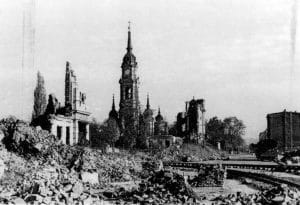
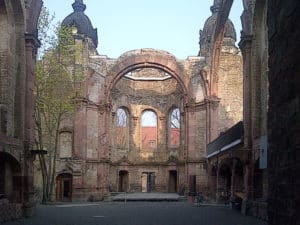
Youth Center Jugendkirche Dresden
From 2019 to 2020, the Evangelical Lutheran church districts Dresden Mitte and Dresden Nord, supported by the European Regional Development Fund (ERDF) and funds of the city of Dresden, developped the ruine into the youth center Jugendkirche Dresden. Since 2021, it provides spaces for inspirational events and experiences for the youth from the neighborhood and the entire metropolitan area. Young people can get together, interact with one another, discover their own forms of expression and enjoy different types of events. The existing Jugendtreff Trini and the business office of the Evangelische Jugend Dresden will also have a place in the new building, next to a large, multipurpose event room.
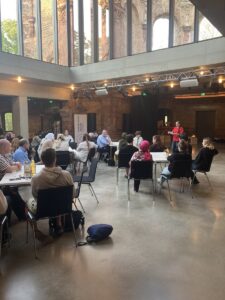
Find more information about the Jugendkirche here.
Text: Matthias Erfurth, Matthias Kunert, Henning Seidler
Editorial deadline: January 2024
